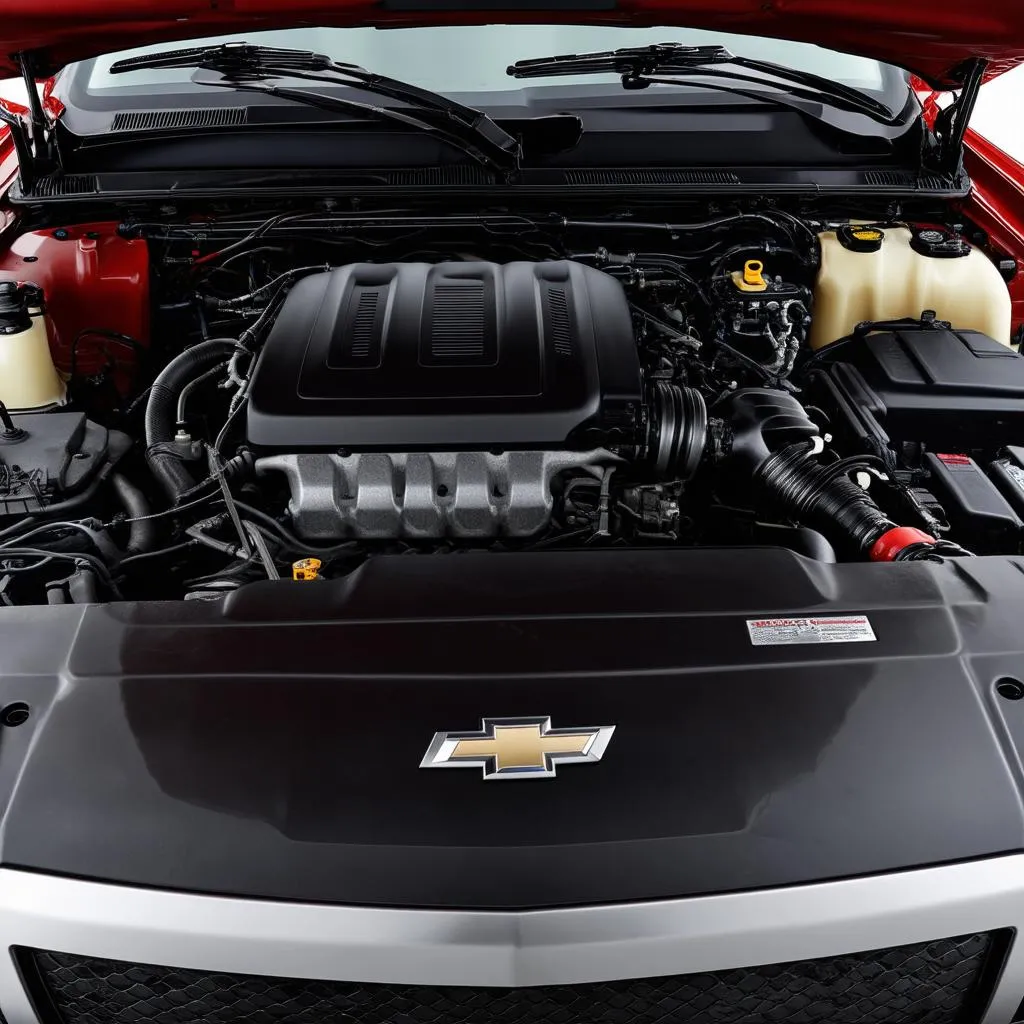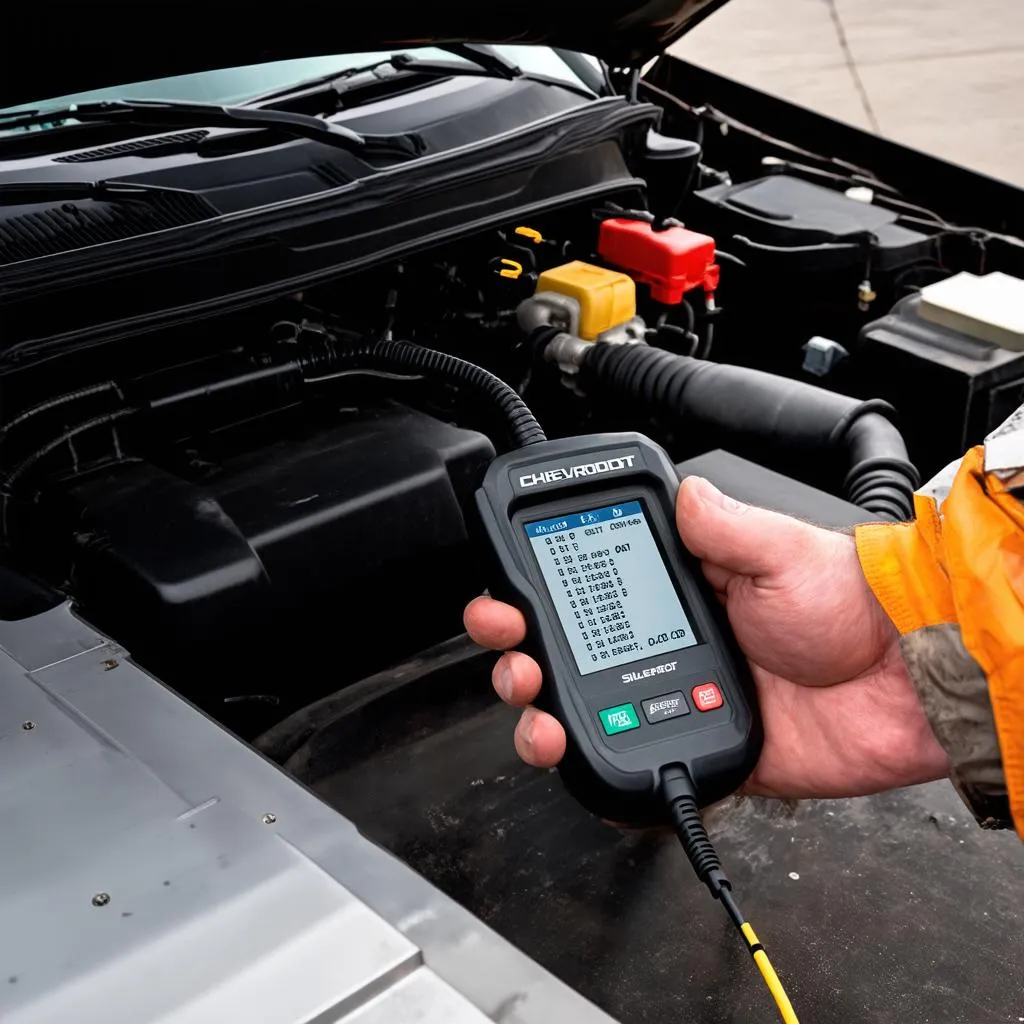“My Silverado’s running rough, the check engine light is flashing, and my mechanic just called it a ‘P0300’. What in the world does that even mean?”
Sound familiar? You’re not alone. Many Chevy Silverado owners have found themselves staring at a cryptic code on their OBD reader, feeling a mix of frustration and confusion. That code, my friend, is more than just a random jumble of numbers – it’s your truck’s way of telling you something’s not quite right. Specifically, that pesky P0300 code indicates a “random or multiple cylinder misfire.”
Now, before you panic and imagine your beloved Silverado transforming into a money pit, take a deep breath. Let’s demystify this OBD code, explore the common culprits, and equip you with the knowledge to tackle this issue head-on.
Decoding the P0300: What Causes a Random Misfire?
Imagine your engine as a well-choreographed dance floor, with each cylinder firing in perfect harmony to propel your Silverado down the road. A misfire is like a dancer suddenly stumbling, disrupting the rhythm and throwing off the entire performance.
A P0300 code signifies that this stumble is happening across multiple cylinders (or maybe just one, but at unpredictable times), making it trickier to pinpoint the exact cause. This “randomness” is why diagnosing a P0300 often requires a bit more investigative work than other, more specific misfire codes.
Common Culprits Behind the P0300 Code
Here are some of the usual suspects behind a P0300 code in your Chevy Silverado:
- Spark Plugs and Wires: Worn-out spark plugs or damaged wires can disrupt the electrical current needed for ignition, leading to misfires. Think of it like trying to start a campfire with a damp match – you might get a spark here and there, but no consistent flame.
- Fuel System Issues: From a clogged fuel filter restricting fuel flow to a malfunctioning fuel injector delivering inconsistent sprays, any hiccup in the fuel delivery system can starve your cylinders of the fuel they need to fire properly.
- Vacuum Leaks: Like a rogue straw in your milkshake, a vacuum leak can disrupt the carefully calibrated air-fuel mixture needed for combustion, causing misfires and wreaking havoc on your engine’s performance.
- Sensors Gone Haywire: Your Silverado relies on a network of sensors to monitor engine performance and make real-time adjustments. A faulty mass airflow sensor (MAF), throttle position sensor (TPS), or oxygen sensor (O2) can send inaccurate data to the engine control unit (ECU), leading to an imbalanced air-fuel mixture and, you guessed it, misfires.
- Ignition System Malfunctions: Beyond just spark plugs and wires, issues within the ignition system itself – such as a failing ignition coil or a faulty crankshaft position sensor – can also contribute to random misfires.
Beyond the Mechanical: A Touch of Superstition
While we’re deeply entrenched in the world of spark plugs and sensors, it’s worth noting that some car owners, particularly those who subscribe to certain spiritual beliefs, might attribute a rough-running engine to more than just mechanical issues. In some cultures, a sudden onset of car trouble is seen as a sign of bad luck or even a message from the spiritual realm.
While we at techcarusa.com always encourage a practical, problem-solving approach rooted in automotive science, it’s fascinating to acknowledge the diverse perspectives people bring to their vehicles. After all, cars are often more than just machines to us; they carry our loved ones, transport us to new adventures, and become intertwined with our daily lives.
Taming the P0300 Beast: Tips for Diagnosis and Repair
Now that we’ve explored the potential causes of your Silverado’s P0300 code, let’s equip you with some steps to tackle this issue:
- Start with the Basics: Check your spark plugs, wires, and air filter. These are often the easiest and most affordable fixes, and a little preventative maintenance never hurts.
- Inspect for Vacuum Leaks: A visual inspection of your vacuum hoses and a thorough check for hissing sounds coming from the engine bay can help identify potential leaks.
- Fuel System Check-Up: If your fuel filter is clogged or your fuel pump is failing, your engine won’t receive the fuel it needs to run smoothly. Have these components inspected by a qualified mechanic.
- Sensor Evaluation: A scan tool can help pinpoint which sensor might be sending faulty data to your ECU. However, keep in mind that replacing sensors should be done strategically, as they can be costly.
- Consult a Professional: If you’re not comfortable diving deep into your Silverado’s engine, or if the problem persists despite your best efforts, it’s always wise to consult a qualified mechanic specializing in Chevy vehicles. They have the experience, tools, and diagnostic expertise to get to the root of the problem efficiently.
 Chevy Silverado Engine Bay
Chevy Silverado Engine Bay
Beyond the P0300: Other Silverado OBD Codes to Watch Out For
The P0300 is just one code in a vast library of OBD-II codes that your Silverado might throw your way. Here are a few others to keep in mind:
- P0420: Catalyst System Efficiency Below Threshold (Bank 1) – This code suggests a problem with your catalytic converter, which plays a crucial role in reducing harmful emissions.
- P0171: System Too Lean (Bank 1) – This code indicates that the air-fuel mixture in your engine is too lean (too much air, not enough fuel), which can lead to performance issues and potential engine damage.
- P0440: Evaporative Emission Control System Malfunction – This code signals a problem with your vehicle’s evaporative emissions system, which is responsible for preventing fuel vapors from escaping into the atmosphere.
 Chevy Silverado OBD Scanner
Chevy Silverado OBD Scanner
Keep Your Silverado Running Smooth: Maintenance is Key
Just as you wouldn’t skip regular check-ups with your doctor, your Silverado thrives on routine maintenance to prevent issues before they escalate into major headaches.
- Regular Oil Changes: Fresh oil keeps your engine lubricated and running smoothly, preventing premature wear and tear.
- Air Filter Replacement: A clean air filter ensures your engine receives the optimal amount of air for combustion, improving performance and fuel efficiency.
- Spark Plug and Wire Inspection: Replacing worn-out spark plugs and damaged wires at recommended intervals can prevent misfires and ensure reliable engine performance.
Need a Hand? We’re Just a Message Away!
Experiencing car troubles can be stressful, but remember, you’re not alone. At techcarusa.com, we’re dedicated to providing you with the information and resources you need to keep your Chevy Silverado running in top shape.
For expert advice, diagnostic support, and assistance with finding the right tools for the job, don’t hesitate to reach out to our team of automotive specialists via Whatsapp at +84767531508. We’re here to help you navigate the world of car repair and get you back on the road with confidence.
Remember, a well-maintained Silverado is a happy Silverado. Happy driving!